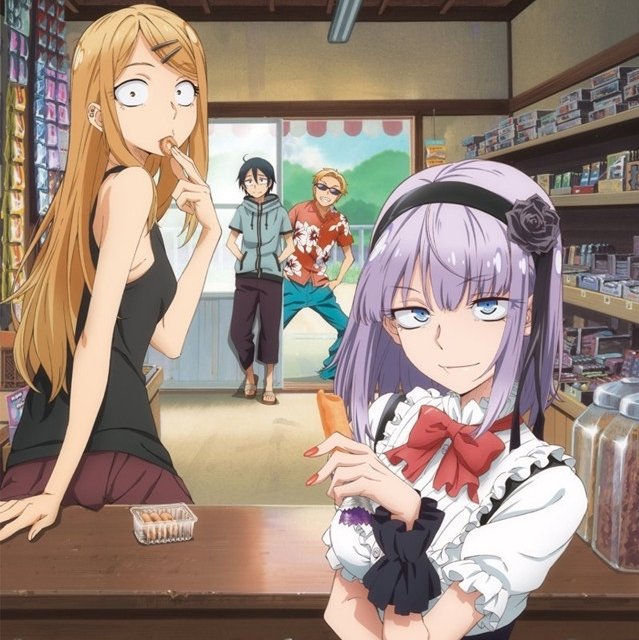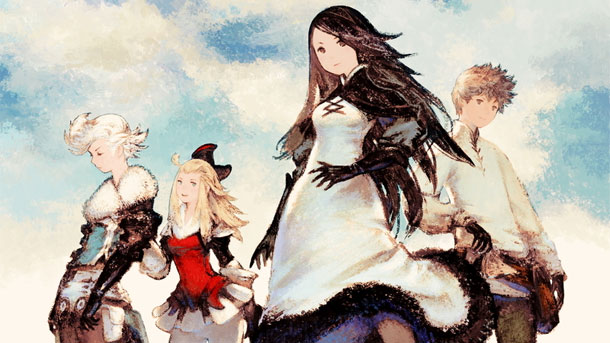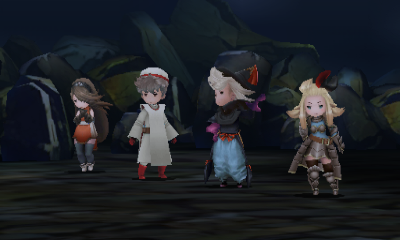Dagashi Kashi is a slice-of-life anime about dagashi, or Japanese snacks. Throughout the anime, while talking about the lives of its cast, it also delves into the various dagashi sold throughout Japan and a history of how they came to be.

The anime has a delightful cast, the reluctant hero Kokonotsu, his slightly immature father Yō, the laid back and perverted friend Tō, the secret crusher Saya and the star of the show Hotaru.
Premise
The basic premise of the show is that Kokonotsu, the ninth in line to be the Shikada Dagashi shop’s owner aspires to be a manga author instead. Meanwhile, Hotaru has been sent by her father’s company, the Shidare Company to convince Yō to join the company. Yō agrees on one condition – that Hotaru must convince Kokonotsu to succeed Yō and take charge of the dagashi shop.
Story
Being a slice of life show, there is no overarching plot in the show. The manga is still ongoing, so the premise I mentioned previously simply serves to drive the character interactions.
So every episode begins loosely with Hotaru and Yō trying to convince Kokonotsu to agtee to succeed as the shop’s owner. That ties in to Hotaru bringing up various dagashi whose history, brand identity, mascots and such are then discussed in the skit. Slightly predictable, but it’s a format that works within the anime’s premise as a show about dagashi and they change it up enough so that it never feels like a drag.
When not talking about dagashi, the show switches to the relationship between the Kokonotsu and the rest of the cast, especially him, Saya and Hotaru. This is one place where the show unfortunately falls short – the characters and the relationships do not develop enough to pull the viewer in and get invested in them. This, I suppose, can be forgiven due to the manga still ongoing, but it does detract from the show.
In any case, the show delivers on its premise quite well. The world of dagashi is explored in a nice amount of detail and is done in a manner to not bore the viewer.
Cast
The characters in Dagashi Kashi are arguably its strongest point. While the story doesn’t progress too much, the character themselves are quite likeable. While Hotaru, Tō, Yō and Kokonotsu all get their time to shine, Saya is the who really carries the show. The fact that Hotaru calls her Saya-shi (Master Saya) is a good indication. Along with Hotaru, she does seem to be rather popular with the people who watched it.
The animation is beautiful and all characters stand out quite well – no one feels dull. While the character tropes in play aren’t exactly original, it’s enough to make the characters feel distinct and new.
Saya-chan is precious.
And lastly, fanservice
Dagashi Kashi is generally light in terms of fanservice. There are a few lewd jokes and some suggestive scenes scattered throughout the 12 episodes, Hotaru’s “assets” do get focus from time to time but overall, nothing feels particularly distracting.
Conclusion
Dagashi Kashi is overall an enjoyable anime and will likely prompt you go follow the manga from where the anime ends. The anime does get bogged down by its less than compelling story-telling though, so you may no end up caring for the characters in the show. It’s hit-or-miss and largely hinges on how much do you find yourself attracted to the characters. Regardless you will walk away with a large trivia knowledge of the world of dagashi.

![[HorribleSubs] Dagashi Kashi - 06 [720p].mkv_snapshot_10.02_[2017.03.27_20.52.02] [HorribleSubs] Dagashi Kashi - 06 [720p].mkv_snapshot_10.02_[2017.03.27_20.52.02]](https://falkoopablog.files.wordpress.com/2017/03/horriblesubs-dagashi-kashi-06-720p-mkv_snapshot_10-02_2017-03-27_20-52-02.png?w=401&resize=401%2C225&h=225#038;h=225)
![[HorribleSubs] Dagashi Kashi - 07 [720p].mkv_snapshot_13.02_[2017.03.27_22.27.29] [HorribleSubs] Dagashi Kashi - 07 [720p].mkv_snapshot_13.02_[2017.03.27_22.27.29]](https://falkoopablog.files.wordpress.com/2017/03/horriblesubs-dagashi-kashi-07-720p-mkv_snapshot_13-02_2017-03-27_22-27-29.png?w=400&resize=400%2C225&h=225#038;h=225)
![[HorribleSubs] Dagashi Kashi - 08 [720p].mkv_snapshot_08.48_[2017.03.27_22.53.58] [HorribleSubs] Dagashi Kashi - 08 [720p].mkv_snapshot_08.48_[2017.03.27_22.53.58]](https://falkoopablog.files.wordpress.com/2017/03/horriblesubs-dagashi-kashi-08-720p-mkv_snapshot_08-48_2017-03-27_22-53-58.png?w=401&resize=401%2C225&h=225#038;h=225)
![[HorribleSubs] Dagashi Kashi - 09 [720p].mkv_snapshot_09.22_[2017.03.28_00.03.19] [HorribleSubs] Dagashi Kashi - 09 [720p].mkv_snapshot_09.22_[2017.03.28_00.03.19]](https://falkoopablog.files.wordpress.com/2017/03/horriblesubs-dagashi-kashi-09-720p-mkv_snapshot_09-22_2017-03-28_00-03-19.png?w=400&resize=400%2C225&h=225#038;h=225)





